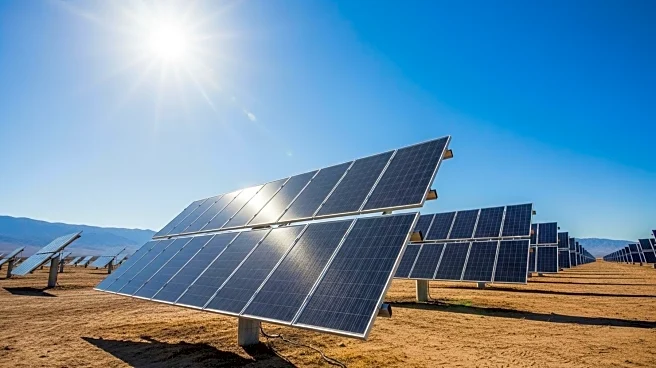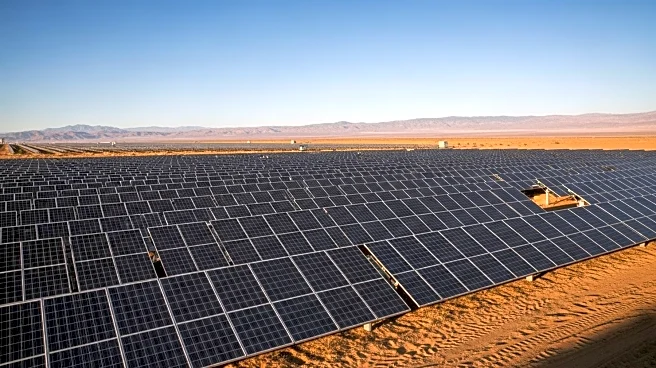What is the story about?
What's Happening?
Sibanye-Stillwater has commenced operations of its 150MW Springbok solar photovoltaic plant in the Free State, South Africa. This project, developed and financed by the SOLA Group, is part of Sibanye-Stillwater's strategy to reduce carbon emissions and reliance on Eskom power. The plant will supply approximately 75 MW to the company's South African operations under a 10-year power purchase agreement. It is expected to meet around 4% of the company's local energy needs and generate annual savings of over R60 million at current electricity rates. This solar plant is the second renewable energy project for Sibanye-Stillwater in 2025, following the 89MW Castle wind farm. Together, these projects contribute 164MW of clean energy to the company's operations.
Why It's Important?
The launch of the Springbok solar plant is a significant step for Sibanye-Stillwater in its journey towards carbon neutrality by 2040. By reducing approximately 229,000 tonnes of carbon dioxide equivalent emissions annually, the project helps mitigate the company's environmental impact and offsets future carbon tax costs. This initiative reflects a broader trend among mining companies in South Africa to stabilize power supply, lower operational costs, and reduce their environmental footprint. The move towards renewable energy is crucial for the mining industry, which is traditionally energy-intensive and heavily reliant on fossil fuels.
What's Next?
Sibanye-Stillwater's commitment to renewable energy is expected to continue, with plans to expand its portfolio of clean energy projects. The company aims to achieve energy independence and further decarbonize its operations. As more mining companies in South Africa adopt similar strategies, there could be a significant shift in the energy landscape, potentially influencing energy policies and market dynamics in the region. Stakeholders, including environmental groups and government agencies, will likely monitor these developments closely.
Beyond the Headlines
The transition to renewable energy in the mining sector may have broader implications for South Africa's energy policy and economic landscape. As companies like Sibanye-Stillwater reduce their reliance on Eskom, there could be pressure on the national utility to improve its services and infrastructure. Additionally, the shift towards clean energy could spur innovation and investment in renewable technologies, creating new opportunities for economic growth and job creation in the region.
AI Generated Content
Do you find this article useful?













